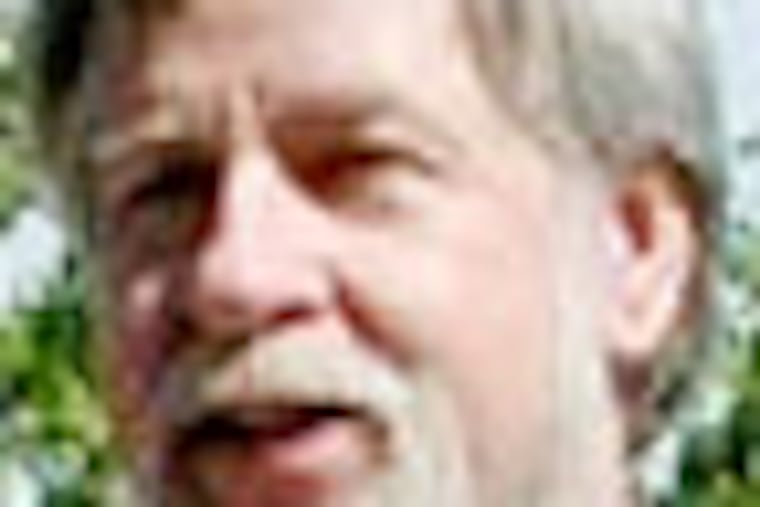Robert J. Sharer, 72, noted archaeologist of ancient Maya
TRAMPING THROUGH jungles and climbing down claustrophobic tunnels in search of the remains of ancient Mayan civilizations was what Robert J. Sharer did for a living.

TRAMPING THROUGH jungles and climbing down claustrophobic tunnels in search of the remains of ancient Mayan civilizations was what Robert J. Sharer did for a living.
It was how the University of Pennsylvania archaeologist got his fulfillment and how he earned him an international reputation in his field.
He died Thursday of pancreatic cancer at age 72.
One of Sharer's most exciting discoveries was the tomb of an ancient Mayan king in 1993 at the Honduran city of Copan. The king is believed to be the city's founder. The tomb was found along with pottery, textiles, feather-work and the king's bones, dating to 437 A.D.
Entering the tomb, Sharer found himself breathing air that had not been breathed by humans for 15 centuries.
He was well-aware of the significance of his find.
"This discovery is extraordinarily important," he told an Inquirer reporter in 1993. "It's like finding the tomb of the very first pharaoh of Egypt."
Sharer conducted archaeological research in Central America for 50 years. His excavations included Quirigua in Guatemala. Both Copan and Quirigua are UNESCO World Heritage Maya sites.
He often was accompanied by Loa P. Traxler, a Penn graduate student whom he married in 1997.
She also tramped through jungles and down those claustrophobic tunnels with Sharer and as part of other teams. She was part of an expedition that discovered another royal tomb in 1992.
Robert Sharer, who retired in 2009, was emeritus curator of the American section of the Penn Museum and emeritus Shoemaker Professor in Anthropology at Penn.
Since his retirement, he had been organizing his papers and research findings for publication.
He can be seen and heard discussing his work in an interactive kiosk at the "Maya 2012: Lords of Time" exhibit now at the Penn Museum of Archaeology and Anthropology. Loa Traxler is the exhibition curator.
She holds a Ph.D. in anthropology from Penn and was a member of the team at the Copan site.
"It was quite an exciting life," she said.
At Copan, researchers dug beneath the Acropolis, a ritual and residential center that housed 16 Mayan kings between 400 and 800 A.D.
Sharer was always intrigued by how advanced the Mayan civilization was and how it produced major findings in astronomy, mathematics, art and agriculture.
The Penn team began excavations at Copan in 1989. The scientists discovered a network of tunnels descending 65 feet beneath the city. It was through these tunnels that Sharer and his team made their way to the royal tomb.
They also found danger: A reddish powder on the walls that turned out to be cinnabar, a pigment commonly used by Mayans that contains mercuric sulfide, which is toxic. Further exploration had to be postponed until the team members could find protective gear.
Among Sharer's discoveries about the Mayans was how much they loved and treasured chocolate. Chocolate was important to Mayans, he told an Inquirer reporter in 2002.
"Chocolate was associated with wealth and power," he said. "Many chocolate vessels have been found in the tombs of the elite. It was traded and also used as monetary exchange."
Sharer grew up in Battle Creek, Mich. He became interested in archaeology as an undergraduate at Michigan State University when he took a job at the university museum.
He was persuaded to continue his education in anthropology at Penn, where he began his graduate studies in 1961.
As an ROTC student at Michigan State, he was required to spend two years on active duty with the Army. He worked in military intelligence in Washington.
After his return to Penn, he completed his graduate studies and received his doctorate in 1968.
Sharer's fascination with the Mayan culture began when he took a course in Mayan ethnography and spent a summer of research in Guatemala.
He taught at Pitzer College, part of the Claremont Colleges in California from 1967 to 1972. During this time, he also made trips to explore Chalchuapa, a Mayan site in El Salvador.
Since his retirement, he and his wife had devoted themselves to gathering his databases, artifacts, records, photographs, maps and other material for the study of the subject he held dear for 50 years by future generations.
Besides his wife, he is survived by three children from a previous marriage - daughter Lisa Matusiak and sons Jon Daniel and Michael - and seven grandchildren.
Services: A memorial service is being planned for some time in November at the Penn Museum.